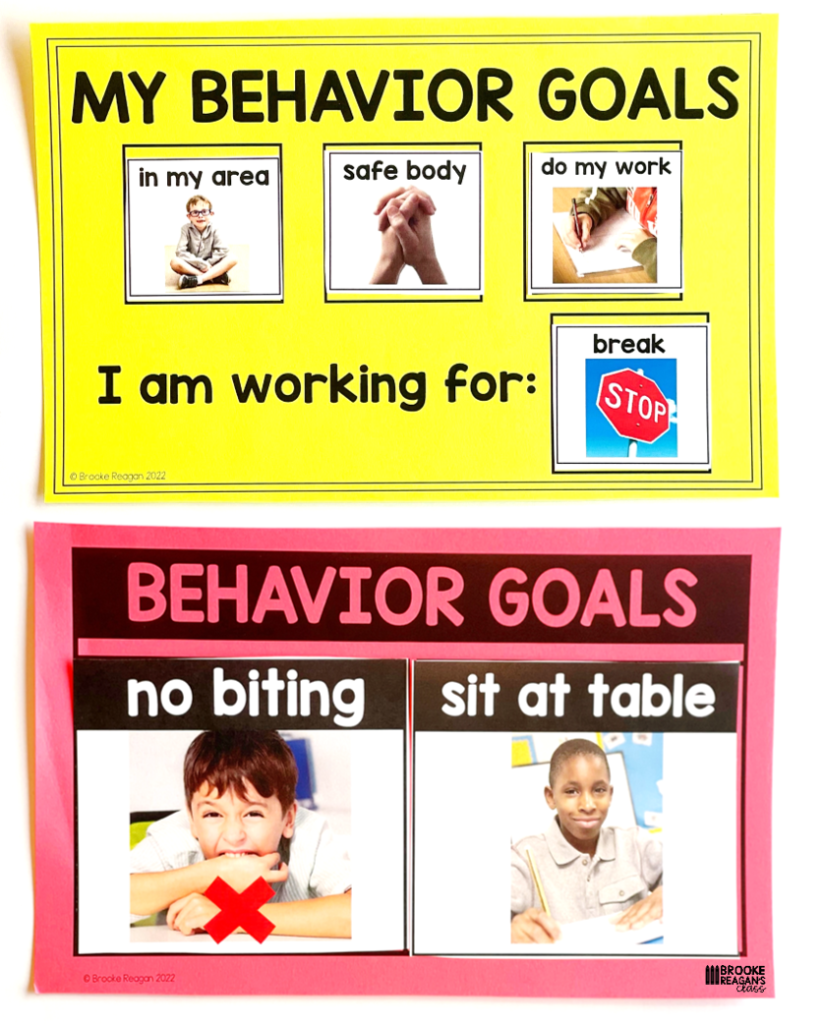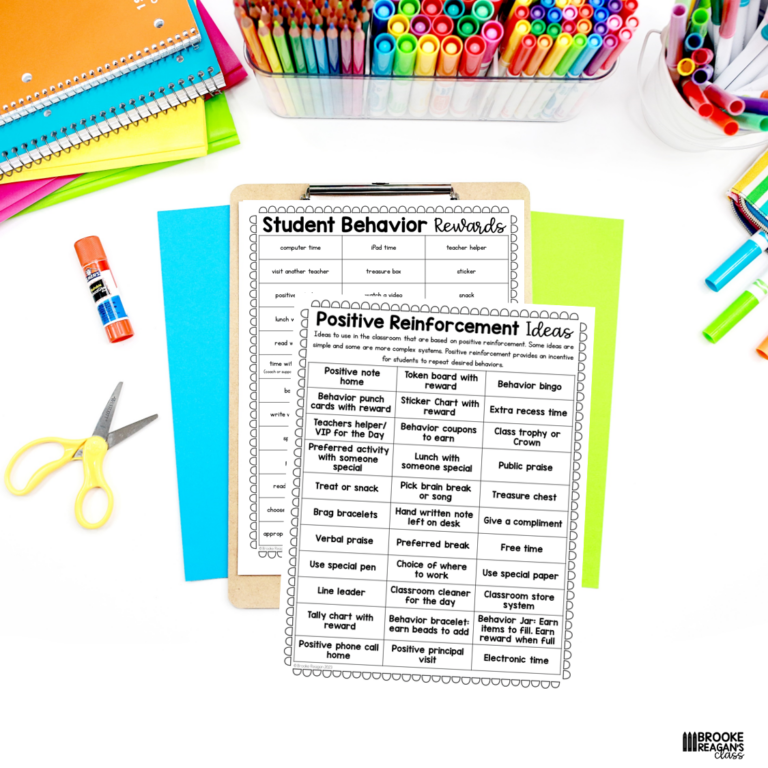

Behavior visuals are a non-verbal cue that demonstrate appropriate behavior and expectations. Behavior visuals can be used many different ways. Visuals need to be clear and direct so students explicitly know what is expected.

Providing visuals that are portal and easily accessible helps with maintaining appropriate behaviors. I like to add student’s visual boards to a folder. You can add them to the inside of a folder to be discrete, or to the outside to keep the folder functional. A folder can easily be carried for consistency of behavior reminders and to help decrease problem behavior.
In the picture above, the behavior goal visual on the bottom, is a positive reinforcement board that reminds students of the incentive/ reward they are working towards. This helps with motivating students and promoting appropriate behaviors.

Another way to keep visuals portable and easily accessible, is to create a key ring of visual cue cards. As needed, you can flip to the behavior visual that is appropriate for the time being. For example, if you are working with a child on bolting or elopement, you could turn to the visual of, “No Running”, as a reminder when walking in the hallway.

Providing clear descriptions of the picture is also helpful, even if a child is not yet able to read. It teaches how words represent pictures and labels the action.

Visuals can also be taped or placed on a desk or table spot. These visual of behavior goals are interchangeable. You can choose to work on one behavior goal cue card at a time or all four. It depends on the student and their behavior goals and needs.

Another great option to add to a student’s desk or workspace are behavior reminders. This is a positive way to show desired behavior and expectations. When added to a student’s work area, the teacher can non-verbally remind the student by pointing to a picture reminder when needed. This allows for the teaching to continue, but the non-desired behavior to be redirected.

No matter the way you choose to present behavior visuals to students, they are most effective when used consistently across settings to decrease problem behavior. The goal is to fade out each behavior goal visuals when mastered by the student, but has to be done gradually to avoid regression.
If you have any questions on how to best use these behavior visuals, drop a comment below!

Sign up to receive over 35 ready to use student rewards to boost motivation, promote positive behavior and create a fun learning environment.